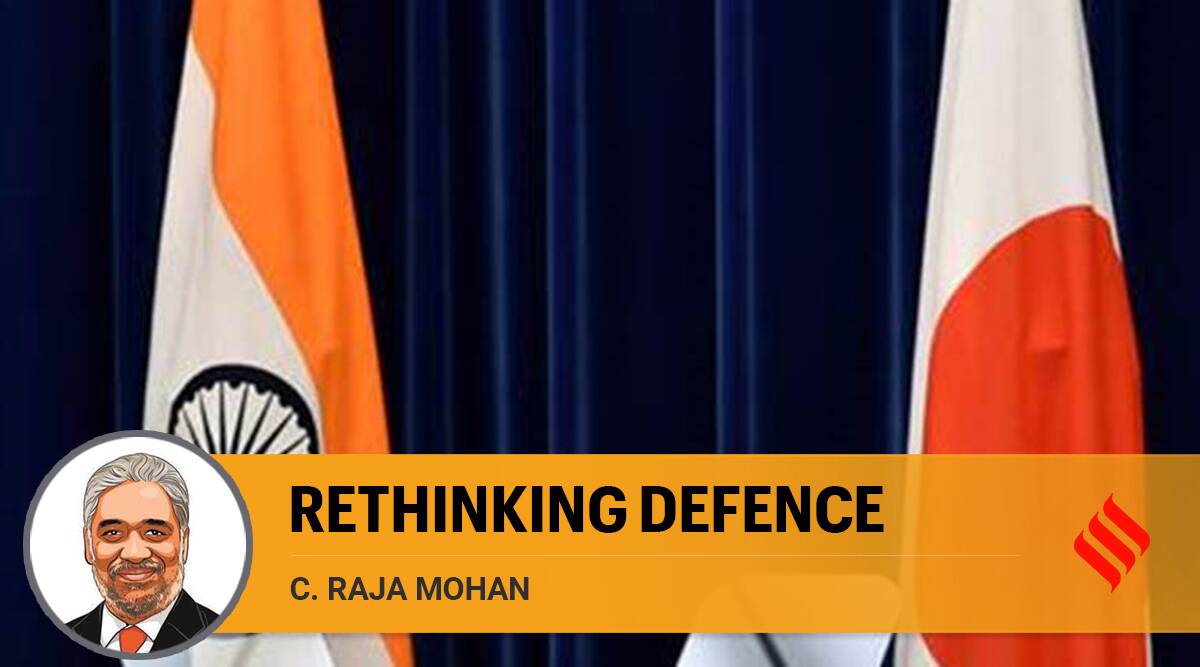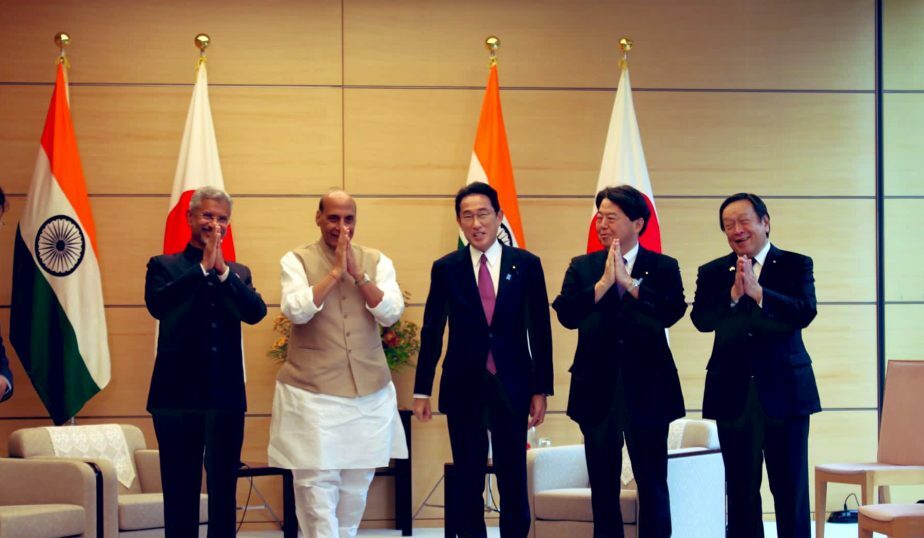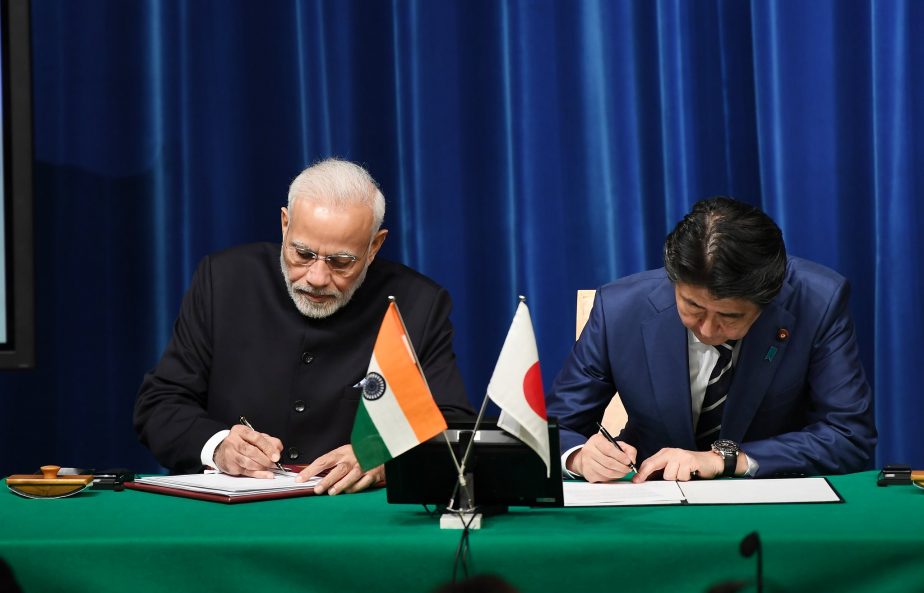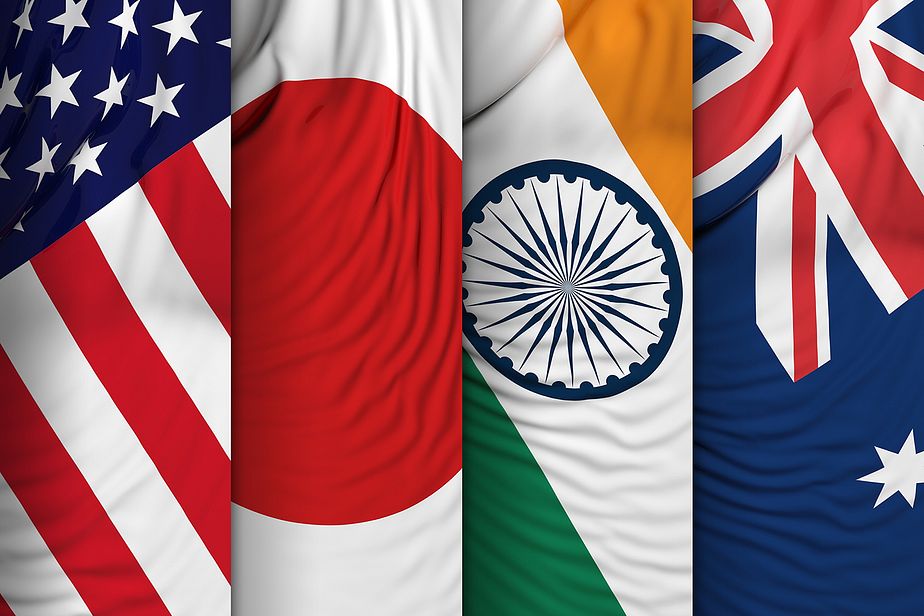Rethinking Defence
THE INDIAN EXPRESS
APLN member C. Raja Mohan, Senior Fellow at the Asia Society Policy Institute, writes on India and Japan’s efforts to boost deterrence against China, as India’s defence and foreign ministers head to Tokyo this week for talks with their Japanese counterparts in the 2+2 dialogue. Read the original article here.
Japan is recasting its national security vision in face of an aggressive China. India must inject strategic content into ties during 2+2 dialogue. There is deep political resistance and bureaucratic inertia against any effort to recast defence policies in both capitals. There is much that Delhi and Tokyo could do together in meeting their common security challenges.
As India’s defence and foreign ministers head to Tokyo this week for talks with their Japanese counterparts in the so-called 2+2 format, they are bound to exchange notes on their shared and mounting security challenges. China’s growing military capabilities and assertiveness on territorial disputes are at the heart of the deteriorating environment of India and Japan.
Although India and Japan have had defence exchanges for nearly two decades, declared a common interest in keeping the Indo-Pacific “free and open”, and been partners in the Quadrilateral forum along with the US and Australia, their bilateral security cooperation remains underdeveloped. The innate caution in the Indian and Japanese defence bureaucracies has prevented the two sides from turning their stated strategic objectives into concrete outcomes. With Beijing turning up the heat on both, Delhi and Tokyo are scrambling to cope with the China challenge.
For Rajnath Singh and S Jaishankar, it will be an opportunity to get a first-hand account from the Japanese leadership on Tokyo’s bold new plans to transform its military strategy and build on the common interest in preventing the rise of a new hegemonism in the Indo-Pacific. As in the Himalayas, so in the Western Pacific, where Japan is located, Beijing has sought to unilaterally alter the territorial status quo. The Russian invasion of Ukraine, China’s belligerence towards Taiwan, and the “alliance without limits” unveiled by Beijing and Moscow have intensified the urgency in Tokyo to recast Japan’s security policies.
Japan is in the middle of a massive domestic debate that will culminate in the revision of Tokyo’s national security strategy, national defence strategy, and medium-term plans to build new military capabilities.
Japan’s new strategy to cope with Chinese power involves three broad elements — reorienting Japan’s diplomacy, boosting national capabilities to deter aggression and deepening defence partnerships. In his address to the annual Shangri La Dialogue in Singapore this June, Japanese PM Fumio Kishida talked of a new “realism diplomacy” that will allow Japan to meet the new security challenges through pragmatism and firmness.
Second, on the question of deterrence, Kishida declared his commitment to “fundamentally reinforce Japan’s defence capabilities within the next five years and secure substantial increase of Japan’s defence budget needed to effect it”. While Kishida did not put a number to the “substantial increase” in defence spending, his ruling Liberal Democratic Party recently called for raising the share of defence to two per cent of the GDP. Japan has traditionally limited its defence spending to one per cent.
But given the size of the Japanese economy, which is the third-largest in the world, the small percentage of spending on defence did produce a reasonable defence budget — about $40 billion today. Japan is the 9th largest defence spender in the world. But a doubling of the defence allocation over the next few years, could make it the third-largest defence spender after the US and China (a distant third we must note). More than the size of the budget, it is important to see what Japan wants to do with the extra money. One focus is on building what is being called “counter-strike” weapons to deter Chinese aggression. In essence, it is about acquiring long-range missiles that can strike critical targets — including missile bases and command headquarters in China (and North Korea). While China’s missile arsenals are growing, Japan does not have long-range missiles, and the US had been under treaty obligations with Russia not to develop and deploy longer-range missiles in Asia. This is set to change as Japan and the US confront the problem of deterring China (as well as North Korea).
Some experts in Japan are calling for the deployment of a thousand long-range missiles. Their case has been reinforced by the recent PLA exercises around Taiwan following the visit of the US speaker Nancy Pelosi. Five of the Chinese missiles were targeted to land in Japanese waters. Critics call such a counter-strike capability a departure from the principles of Japan’s peace constitution. Some experts call for defensive capabilities that can intercept the Chinese missiles on their way.
These missiles are, of course, to be armed with conventional warheads with precision guidance. This debate on deterring China with conventional weapons should not be conflated with the emerging debate on Japan exploring the option of “sharing nuclear weapons” with the US.
The third element of the new Japanese strategy is about building stronger defence partnerships in the Indo-Pacific. Even as it builds national capabilities, Japan continues to emphasise the centrality of the alliance with the US in dealing with China. Tokyo is also looking to strengthen security partnerships with other like-minded countries such as Australia and India. Tokyo is also promising to strengthen the defence capabilities of the Indo-Pacific countries, unilaterally as well as through the Quad. It is also boosting defence and security cooperation with France and the UK.
China is accusing Japan of “abandoning” its traditional pacifist path. In an editorial last month, The Global Times warned: “Once the Pandora’s box of strengthening Japan’s military power is opened, the consequences would be unimaginable and pose a severe threat to regional peace and stability.” But Beijing has no one to blame but itself for its territorial expansionism and military assertiveness.
Japan is no longer apologetic about its new determination to protect itself. For different reasons, both Tokyo and Delhi had tended to be far too deferential to China and hesitant to call out Beijing’s unacceptable actions. Political guilt in Tokyo for Japanese imperialism in the early 20th century was matched by Delhi’s presumed political obligation for “Asian solidarity” with Beijing and “non-alignment”.
While Tokyo and Delhi are shedding their old inhibitions, the Japanese debate is coming up with concrete options to cope with the growing Chinese military power. In Delhi, the discourse within the strategic community remains focused on geopolitical abstractions rather than concrete military strategies. Both Delhi and Tokyo have some distance to go in developing capabilities to deter Beijing. There is deep political resistance and bureaucratic inertia against any effort to recast defence policies in both capitals.
Singh and Jaishankar have their task cut out in Tokyo — to inject substantive military content into the strategic partnership between India and Japan. For there is much that Delhi and Tokyo could do together in meeting their common security challenges.
Image: While Tokyo and Delhi are shedding their old inhibitions, the Japanese debate is coming up with concrete options to cope with the growing Chinese military power. (File Photo)




